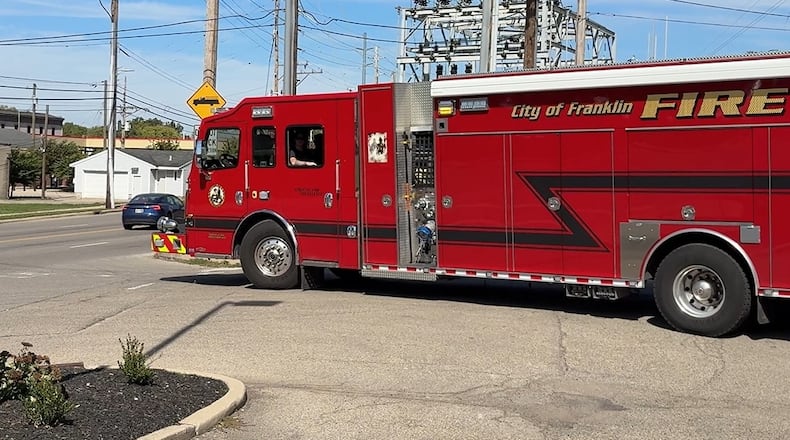This is the same request for the Franklin Division of Fire & EMS on the May 6 ballot.
“After it failed, we discussed it in a city council meeting about what to do next, and we had several citizens in attendance at that meeting and they really spoke up,” said Chief Daniel Stitzel. “It failed, I think, by 74 votes. They told council with the low voter turnout they didn’t consider that a mandate, they didn’t consider that a fair representation of the city’s desire. The people that were in attendance at that meeting strongly urged council to put the same levy back out again.”
Credit: Jen Balduf
Credit: Jen Balduf
The fire division has had an open house and scheduled three town halls on the fire levy. The last two are at 9 a.m. Oct. 18 and 6 p.m. Oct. 28 at the fire station, 45 E. Fourth St. Each session also will be available for online participation.
The city’s last tax levy request for fire department funding was in 2012. At the time, voters were told it would last for 10 years.
“We made that levy last for 13 years,” said Stitzel, who added that the amount collected stays the same. “The cost of everything goes up every year, so we haven’t gotten a raise from our tax dollars in 13 years. It’s to the point now to where due to our aging apparatus, our service demands, our staffing needs, we have to go back out (to voters).”
Additional funds are needed just to maintain staffing, the chief said. It will not increase staffing. However, without a levy passage there likely would be a staff reduction because a $1 million Federal Emergency Management Agency grant ends in December 2026 that pays for nine positions.
“When that grant runs out, we have no funding mechanism in place to continue to support those nine positions, so we are potentially looking at having to remove those nine positions; that’s three people a day,” Stitzel said.
The division has responded to 1,988 calls for service as of Thursday afternoon, with the number of calls expected to surpass 2,600 by the end of the year.
The division’s aging fleet also must be addressed, he said. The average lifespan for fire equipment is about 20 years, but Franklin has a ladder truck and engine that’s 28 and 26 years old, and Stitzel said there typically is one vehicle in the shop at all times.
“I have spent over $65,000 in repairs this year, not preventive maintenance, not oil changes. I’m talking about just repairs to keep the apparatus on the road from age-related things going wrong with it, you know, radiator, clutch fans and transmissions, things that are breaking down. Some of this stuff is so old it takes months to find parts. I had an engine that was out of service for seven months, just trying to find the parts for it,” he said.
Other anticipated costs include new cardiac monitors and chest compressor devices, which have reached their lifespan. The monitors and chest compressors still work, but there is no way to repair them once they no longer function, Stitzel said.
Unlike manual CPR, which cannot be done while bringing a patient down the stairs and in other similar situations, the chest compressor does CPR consistently from the time it goes on the patient until reaching the hospital.
“What we noticed is that we had a higher percentage of patients that we got a pulse back on and saved more lives,” Stitzel said.
Levy funds also are needed to address maintenance at the 20-year-old fire station. This year, Stitzel had to divert funds intended for new turnout gear, which is the protective clothing worn by firefighters, to replace two of the building’s five HVAC units, which have all reached the end of their lifespan.
About the Author

